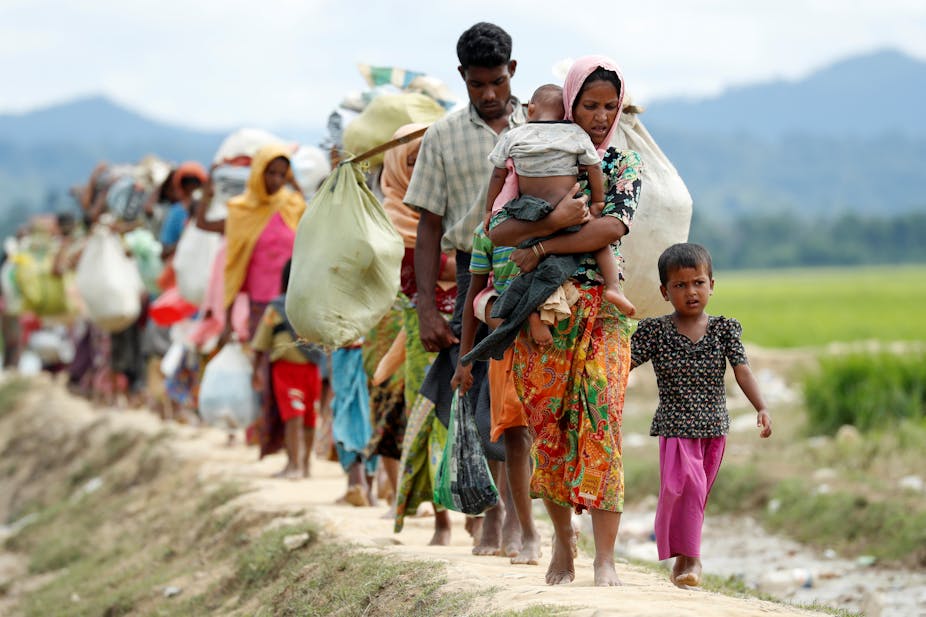Who are the Rohingya people?
The Rohingya are a Muslim ethnic minority group. Before 2017, 1.4 million Rohingya people lived in Myanmar, while the rest (which was small in comparison) lived elsewhere in southeast Asia.
Their history begins with the arrival of Islam in Bengal and a region in southeast Asia known as Arakan, located in the southern region of modern day Myanmar. However, it was not until centuries later that they were referred to as the Rohingya. The Rohingya were initially distributed between Bengal and Arakan but this changed once the British arrived in Bengal in the late 1700s. The majority of Rohingya migrated to Arakan, which is how they came to live in modern day Myanmar (once known as Burma).
Arakan is in yellow
What is happening to the Rohingya now?
In 1982, the Rohingya lost their citizenship in Myanmar and about a decade later Arakan was renamed to the Rakhine state. By this point the Rohingya had lost their place in Myanmar, and the government decided that they had permission to do as they please with the Rohingya within the borders of Myanmar. This involved the military and Buddhist nationalists raping and killing the Rohingya and pillaging their homes.
The Rohingya had two primary responses to this persecution: some fought, others flew. Most became refugees or join the Rohingya rebellion formed in the 1990s. Extremists in the rebellion were intent on taking Rakhine for themselves, while others simply wanted citizenship.
Rohingya refugees
In 2016, the U.S. Department of State declared that the Burmese (Myanmar) government, as well as the Buddhist extremists, were responsible for the genocide and ethnic cleansing of the Rohingya. Little did we know, we hadn't even seen the worst of it yet. In 2016, an armed group of people attacked a couple of border police posts in Rakhine which resulted in the death of nine police. A Rohingya insurgent group claimed responsibility, and the Burmese military used this as an opportunity to take the persecution of the Rohingya to a new height. The military began carrying out mass killings and arrests on Rohingya people, as well as burning down hundreds of Rohingya villages. The genocide is still ongoing.
What can you do to help the Rohingya people?
If you wish to help the Rohingya, you can start by spreading awareness. For a genocide, this issue gets little coverage. It is very likely that the majority of people are unaware of this genocide's existence. Greater awareness of this event might prompt the US and UN to take greater measures to aid the Rohingya people. You can also aid the Rohingya by donating to relief funds meant to help the refugees. Links to these funds are provided below.
Where you can learn more about the Rohingya:


Comments
Post a Comment